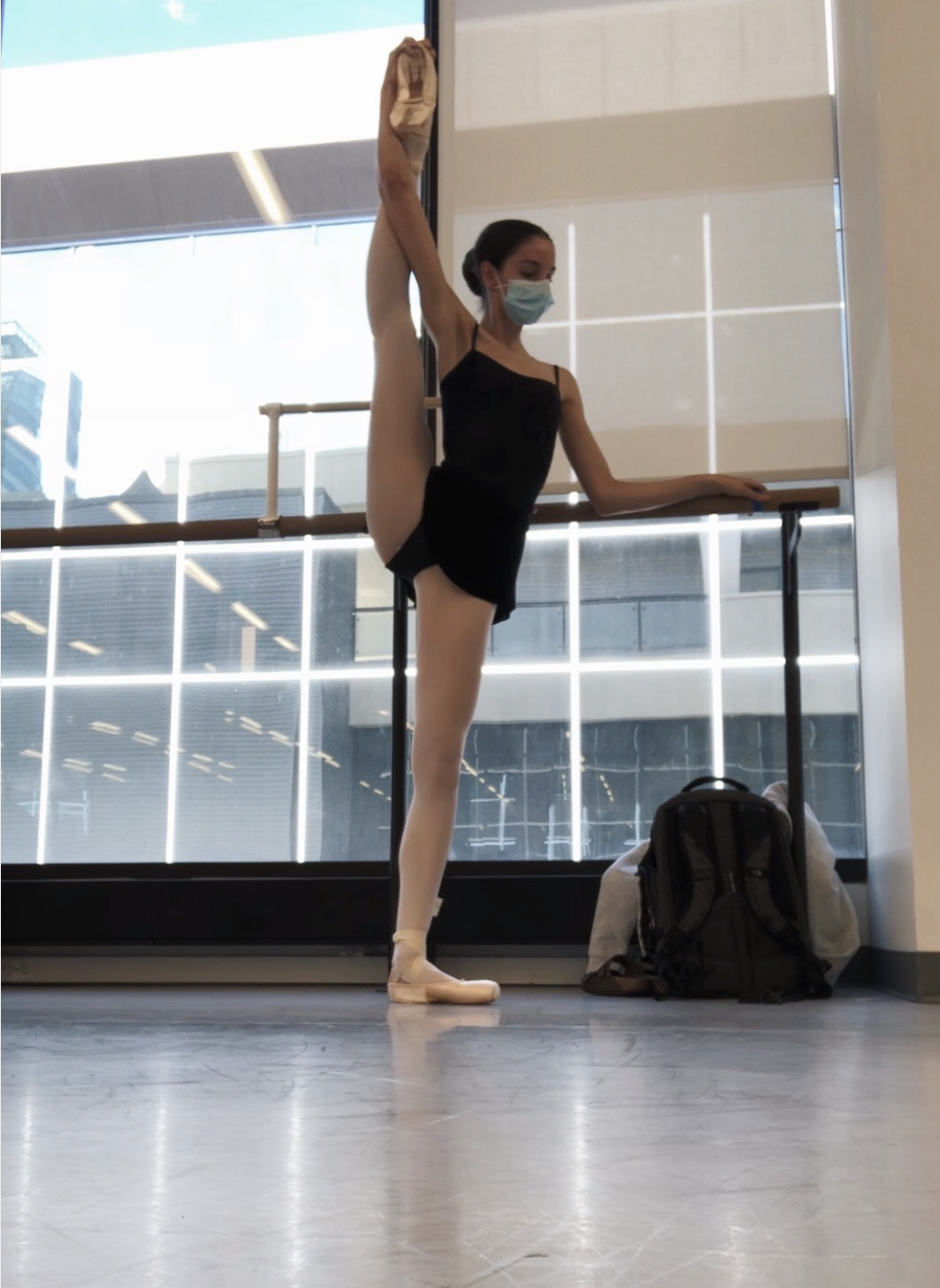
Five, six, seven, eight! In March, the coronavirus swept through the United States leaving quarantined dancers to speculate when they would return to their studios.
“Dance is my home,” Matthew Channer, a student at Alvin Ailey said. “We all love each other like family and it was shocking to not be with them.” Avid dancers practice nearly daily, resulting in close-knit friendships at the studio.
“My main friends are at the studio and it was hard not to see them every night,” Kentucky native, Emilie Harney said.
Dancers around the world have dealt with Covid-19 differently. For many, this has been a time of self-reflection and appreciation of the art. Grace Capeless, a dancer and Broadway actress shed light on how the pandemic changed her perspective on dance.
“I realized how much I missed dancing and the role it played in my life. I feel like I was taking dance for granted before, but this put me back in check. I honestly enjoy it a lot more now because I realized what my life would be like when I didn’t have it.”
Studios have approached virtual instruction and reopening in accordance with their state restrictions. The majority of dance studios and companies decided to shift to a virtual class format once a stay-at-home order was enacted in their area or state. Virtual dance classes and maintaining even the simplest of routines such as putting their hair in a bun provided a sense of comfort during this unprecedented time for many dancers.
Kimberly Galberaith, the owner of Nunnbetter Dance Theatre in New Jersey described her approach to virtual instruction.
“A lot of people started doing virtual classes right away but we waited until April 1st to start. We wanted people to have a moment to get settled and understand what was happening.”
“Initially we thought that it would only be a few weeks. We took Zoom classes every day and our teachers were really helpful with getting our home spaces set up,” Vitacca School for Dance trainee Alessandra Carter said about her Houston studio.
Kaya Jones, a trainee at the Idaho Regional Ballet, explained that her studio chose to provide daily virtual instruction with smaller groups, ensuring that each student could receive individualized attention. Ballet technique is extremely specific and has many minute details that are difficult to address in large classes.
“COVID-19 was a good time to step back and focus on technique. I feel like I came out of quarantine with much stronger technique.”
Studios commenced virtual instruction with caution in an effort to prevent injuries, largely due to the lack of equipment needed to safely dance, such as sprung flooring. As a result, jumps were excluded from the virtual curriculum, Carter said.
“My image of myself, my body image, my lines, got worse, because I wasn’t jumping at all,” Harney said.
Other companies such as Alvin Ailey and the Washington Ballet decided to host virtual classes per the schedule they had been following all year. Channer found that his dance teachers were very lax and considerate of those who may not have had enough space.
“I like that dance is a cycle of endless refinement. Nothing is ever perfect, and that’s what I really like about it,” Emily Blackstone, a student at the Washington Ballet said.
Extensive strategizing went into the plan for reopening the studio, Galberaith said. “I don’t think that people realize the investment that all businesses are putting out there to buy the cleaning equipment and things that we would never really have otherwise.” The studio reopened in July.
As states began to reopen, precautions such as social distancing in the studio, wearing a mask while dancing, and frequently sanitizing ballet barres are enforced, Blackstone said.
Harney and Blackstone both attended the Ballet West Summer Intensive in Utah. Carter was able to attend two summer intensives at her studio and is still actively training in person, and Jones was able to return to her studio and continues to train every day. All were overjoyed to be dancing in studios again.
“When I went to Ballet West I realized how much I missed the studio and the normal class experience. It is so hard to emulate that at home, but I think learning in those two different environments, home and the studio, is important,” Blackstone said.
However, not all studios have been able to reopen yet. As a result, dancers are still anxiously awaiting their return to the studio.
“I’m really excited to go and dance in the studio,” Channer said. “It’s hard not being able to be active all the time and express myself through movement in the way that I can in the studio.”
Nunnbetter Dance Theatre will have in-person and virtual classes available for students in the fall.






